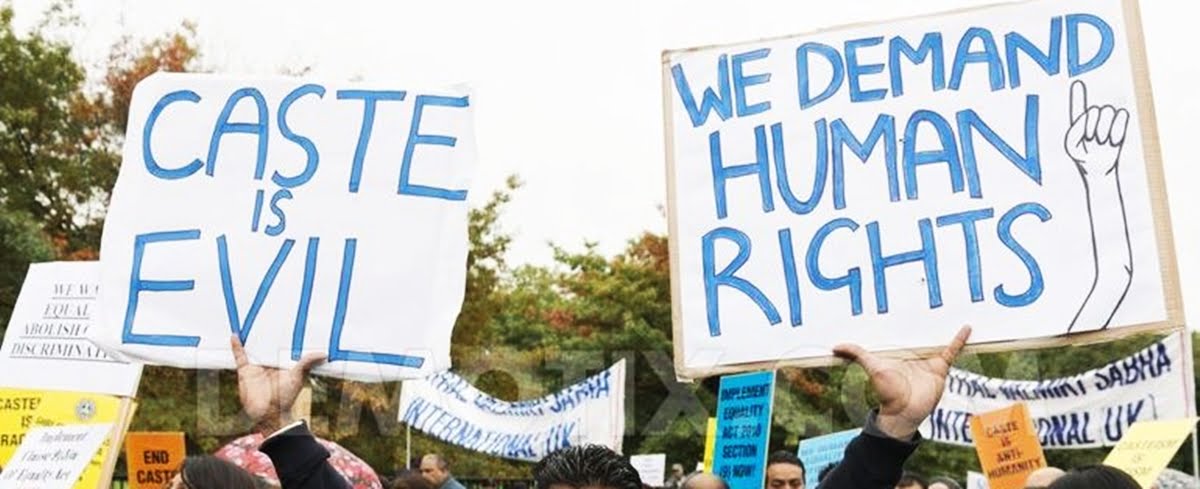Imagine some invisible serpents coiling on a person’s body. The serpents feed on discriminating conversations happening in its surroundings. Each time a person utters a discriminating word, the serpents coil upwards the body of those being discriminated against. The person uttering the word could be anyone, simultaneously the person getting affected could be anyone–friends, family or even a random person you met on the street. The world remains oblivious to the immediate damage done, until one day the serpents reach the head and swallows the person. Caste and gender are two such invisible serpents crawling in our society. Consciously or unconsciously, we feed them with our conversations.
Before we delve deep into the topic, the story of the invisible serpents needs to be clarified. First of all, this isn’t a story made to absolve people from individual responsibility, in fact this story seeks to establish a relation between individual and collective guilt, highlighting the fascinating interplay of individual and social responsibility. Each of us and the society at large are simultaneously guilty.
Also read: RLV Ramakrishnan’s Case Shows The Rampant Casteism in Classical Performing Arts
Before we delve deep into the topic, the story of the invisible serpents needs to be clarified. First of all, this isn’t a story made to absolve people from individual responsibility, in fact this story seeks to establish a relation between individual and collective guilt, highlighting the fascinating interplay of individual and social responsibility.
R L V Ramakrishnan, a renowned and well qualified Mohiniyattam dancer from Kerala recently attempted suicide after being denied a stage to perform in the Kerala Sangeetha Nataka Academy. The act of denying a stage to a well deserved artist is only the visible tip of the ice-berg of discrimination. It is important that we hear these stories again to reflect on the normalcy, the banality of such evils. The society, that includes each one of us, needs to be harangued about the wrong done and the damage caused, till the point where we feel a sharp pang of individual and collective guilt. This colossal purpose of establishing the invisible threads of accountability and guilt is the larger motive of this essay.
Professor Kimberle Crenshaw coined the term ‘intersectional feminism’ to bring forth the layers of discrimination women face in society. Many a times the discrimination faced by a person cannot be reduced to a single factor. People usually find themselves at the crossroads of different types of discrimination. Ramakrishnan, who had to face discrimination from a competent authority, is academically well qualified with a doctorate in Mohiniyattam to his credit. Here we can see the space of artforms, packed with instances of anti-institutional resistance falling prey to the very discriminations it chose to oppose. Let us look at the incident through caste and gendered lens.
When we observe the classical dance forms which are in general dominated by upper caste men and women, the natural instinct is to trace the origins of these artforms to some myths and legends that involve gods and goddesses. It takes conscious efforts to internalise the fact that many of these artforms have their origins in the lower rungs of the society.
For example, Isai Vellalar community of Tamil Nadu, who belong to the so called lower caste spectrum, are associated with the origins of the artforms like Bharatanatyam and Kuchipudi. History took the obvious turn erasing such traces, displacing them from these spaces. Dancers like Nrithya Pillai, who belongs to this community, have been a vocal critic of the elite spaces of art and culture that extend a welcome embrace only to the privileged. In an interview given to Indian Cultural Forum, Nrithya Pillai speaks, “ I had several rude shocks as a dark complexioned, visibly very non-brahmin looking child. I’m not sure if I was good at dancing, but I was never good enough for them. By then, Bharatanatyam and its aesthetics had completely been Brahminised.
Ramakrishnan, in an interview, narrates how he was denied a seat in Kerala Kalamandalam and how his name was dragged to the bottom of the rank list in spite of being the top scorer of the class.
People of Kerala are not oblivious to stories of caste and religion based discrimination. The personal and professional struggles of the first non-Hindu artist to perform the classical dance-drama Kathakali, Kalamandalam Hyderali, has been well documented. People from various corners have called attention to these discriminations. Dr Samkutty Pattomkary covered various aspects of caste and gender based discrimination in his renowned theatre works like ‘Lalla’. Recently Kani Kusruthi, after winning the award for Best Actress in the Kerala State Film Awards, dedicated her award to PK Rosy, the first heroine of the Malayalam film industry, who was shunned and forced to leave the state due to her Dalit and poor background. Yet the stories tend to repeat or at the very least imitate its condemned history.
The second axis that should be drawn to locate this incident is that of gender. Over time Mohiniyattam has become a predominantly female space. Ramakrishnan who has done his doctorate on how male members have also been part of the artform highlighting the contributions they have made for the development of the artform has been denied a stage citing the very reasons he quashed through his doctoral thesis. This is an incident which shows how gender-based discrimination can affect any gender.
On a second look, we also realise how this is an attack on women too. Mohiniyattam is particularly known for its Lasya element which is increasingly associated with femininity. This is particularly restrictive for any gender and the emotional spectrum that could be showcased through the artform gets considerably shortened through which the art form itself gets restricted.
In short, we notice only when the serpents have attacked, when the damage is done beyond repair. Noticing their absence won’t address the root cause of such disappearances. The significant point to notice is how education fails to become the great leveller it promised to be.
Also read: Patriarchy Disciplines Men’s Academic & Occupational Desires
R L V Ramakrishnan’s story made it to the breaking news when he tried to attempt suicide, we paid attention to the story of Rohith Vemula when he was dead and gone, we listened to the story of Dr Payal Tadvi when the curious incident of a young doctor who died by suicide made the headlines. In short, we notice only when the serpents have attacked, when the damage is done beyond repair. Noticing their absence won’t address the root cause of such disappearances. The significant point to notice is how education fails to become the great leveller it promised to be.
Ambedkar returning from Columbia found his friends from America denying him a place to live while in India. As long as invisible serpents such as caste and gender crawl in our society there is no escape from the recurring tragedy of losing out on precious lives. Imagine the number of times you have made passing references to such identities and now imagine how as a society we end up feeding these serpents quite generously.
Through this essay I seek to remind people that invisible serpents are the seemingly harmless references we make about a person’s caste and gender. While slithering around the person attacked, making it unbearable for them to breathe, these serpents bind them in a lethal coil.
Shreya is a graduate in Political Science from Lady Shri Ram College for Women, Delhi. She has an unquenchable thirst for all forms of knowledge. This given, her favorite destination is the level playing field of feminism. She is currently applying for masters while doing an internship in a budding platform named ‘Itisaras’. She can be found on Twitter and Facebook.
Featured Image Source: Sabrang India
About the author(s)
Shreya K Sugathan is a Research Scholar, at the University of Hyderabad.





